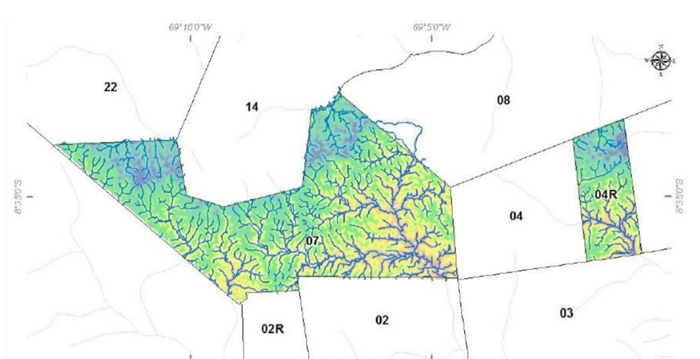
Agrocortex REDD Project
States of Acre and Amazonas, Brazil
The primary objective of the Agrocortex REDD+ Project is to avoid the unplanned deforestation (AUD) of the 186,219 ha project area, consisting of 100% Amazon rainforest. Over the next 30 years, this project will help reduce over 14 million tonnes of CO2 from entering the atmosphere! Furthermore, the project has been lauded for its protection of the Amazon’s rich biodiversity. The project region has one of the highest species richness of birds in the world, lying inside a worldwide birdlife endemic area. Fauna surveys conducted on the Project area indicated the presence of 345 species of birds (which represents 18% of total species cataloged in Brazil).
Awards and certifications

About the Agrocortex Project
Mission
Agrocortex aims to manage tropical forests in a sustainable way, with a multipurpose perspective, using reduced impact techniques to protect the forests and environmental resources. Furthermore, we strive to generate income and positively impact the communities under the influence of our projects while creating value for our employees, shareholders, stakeholders and society in general.
Vision
Be the greatest sustainable forest manager of tropical forests and supplier of multiple products, particularly lumber, bamboo, carbon credits, essences for the pharmaceutical industry, cosmetics and bio-products and environmental services, all certified and originated from well managed forests.

Why Offsetra chose this project
Now, more than ever, we need to support projects that help protect and restore the Amazon rainforest. This project not only helps protect and restore nearly 200,000 hectares of pristine rainforest, it also helps local communities develop new economic opportunities to lift them from poverty. The region is also one of the least scientifically known areas of Brazil and therefore considered a priority area for wildlife inventories. This is demonstrated by the fact that among the last 15 bird species described for the Brazilian Amazon, 8 are within the project region.
Offsetra is also very interested in the SOCIALCARBON® Standard being applied to assess and monitor the projects contribution to sustainability using six key indicators: Biodiversity; Nature; Financial; Human; Social and Carbon Resources. Thus, the project has an additional strong social component by aiming to promote alternative sources of income for local communities and thus contribute to the sustainable development of the region. This includes incentives for establishment of cooperatives for trading non-timber forest products, creating alternative income sources for local communities.

Development Timeline
2016
Agrocortex formed a partnership with Casa da Floresta to monitor avifauna and large and medium-sized mammals at Fazenda Seringal Novo Macapa. These groups were chosen because they are considered good bioindicators, being scientifically well-studied, and thus make it possible to target conservation actions.
2018
In the two biodiversity monitoring campaigns that took place this year, 345 bird and 34 mammal species were identified. Of the species registered, three birds and eight mammals are considered endangered national and/or worldwide, such as Pacarana (Dinomys branickii), Onça Pintada (Panthera onca), the Goeldi Marmoset (Callimico goeldii), the Black-billed Toucan (Ramphastos vitellinus culminatus) and the Blue-headed Maracanã (Primolius couloni).
2019
Additional digital terrain modeling to better understand the hydrology and landscape of protected areas is conducted.
2020
In continued partnership with Casa de Floresta, educational signs have been expanded throughout the protected corridors and nearby farming areas to explain the importance and value of the area's biodiversity value. Lectures and meetings with locals are carried out to help clarify the important issues for the management of flora and fauna.
Climate
The predominant climate in the region is hot humid, with an average annual temperature in around 24.5 ° C. The warm months occur from August to October and the temperature tends to fall from April to July. The rainy season occurs from October to April and the rainfall. The region's annual average is approximately 2,100 millimeters.

Flora
The region is located under three types of vegetation, the Open Ombrophilous Forest Submontana with Dominant Bamboo (tabocal), the Submontana Open Ombrophilous Forest with dominated bamboo (restinga) and dense alluvial rain forest with canopy Emerging. Due to the marked presence of bamboos of the genus Guadua, most of the vegetation is classified as Open Bamboo Forest, which is called regionally like Tabocal. Restinga, on the other hand, has a dense canopy cover and bamboo disperses and integrates in the understory, present only as a dominated element.

Additional information
This project was developed by Agrocortex Madeiras do Acre Agroflorestal Ltda and verified utilizing the VM0015 Methodology for Avoided Unplanned Deforestation, v1.1. Verification and validation was carried out by RINA Services S.p.A using the VCS Standard, v3.7.
Agrocortex is a sustainable development company engaged in conserving the environment through sustainable forest and products/by-products and non-timber forest products (NTFP) management, generating greenhouse gases (GHG) emission reductions, and NTFPs. Agrocortex started sustainable forest management operations in June 2014.